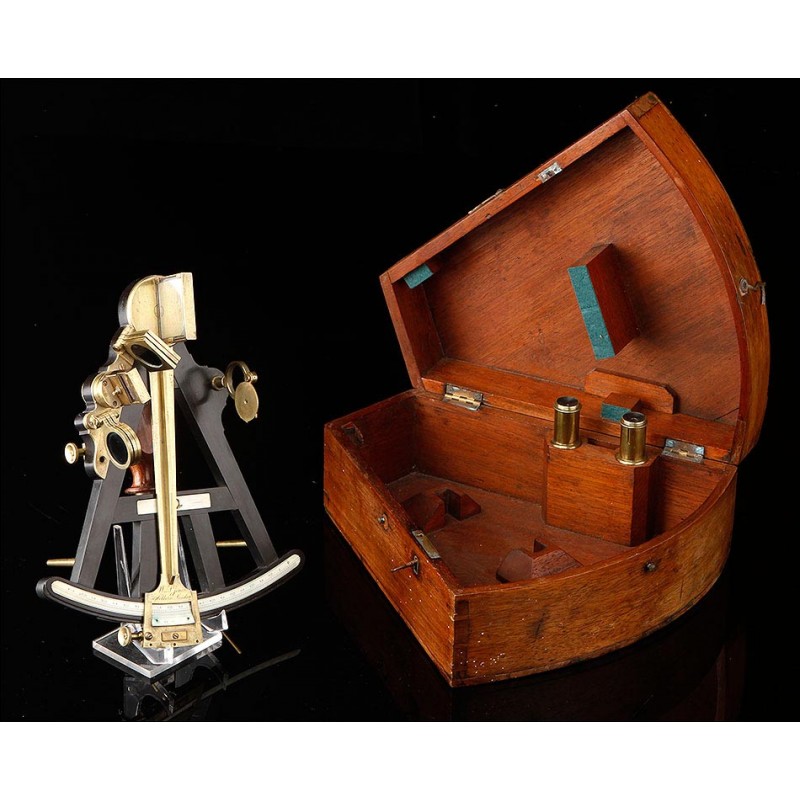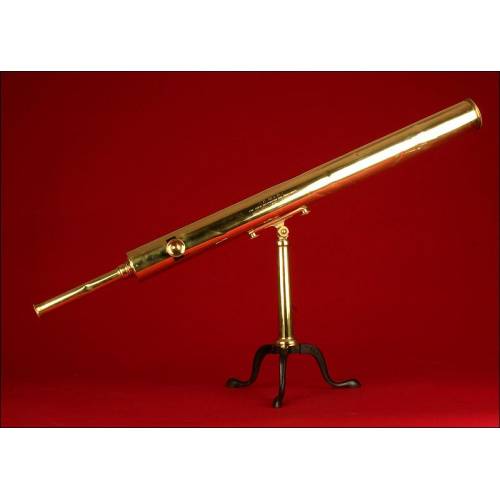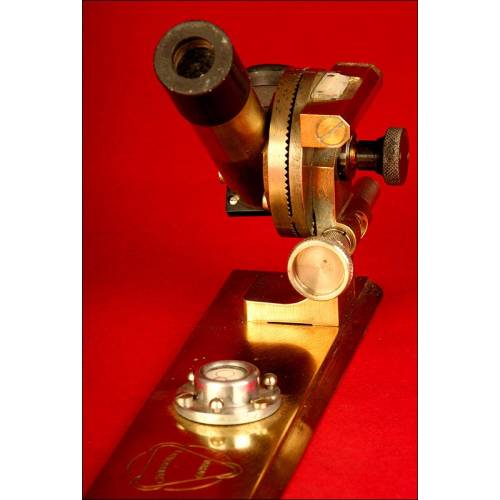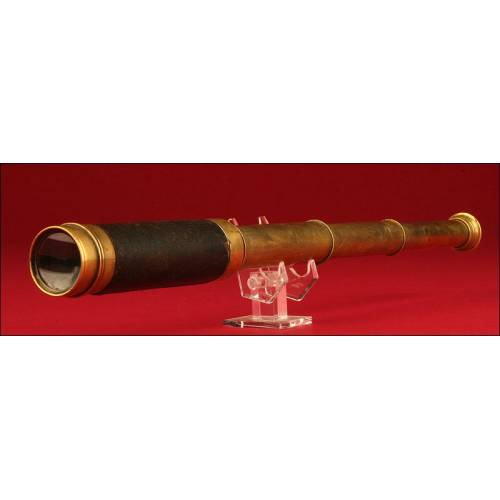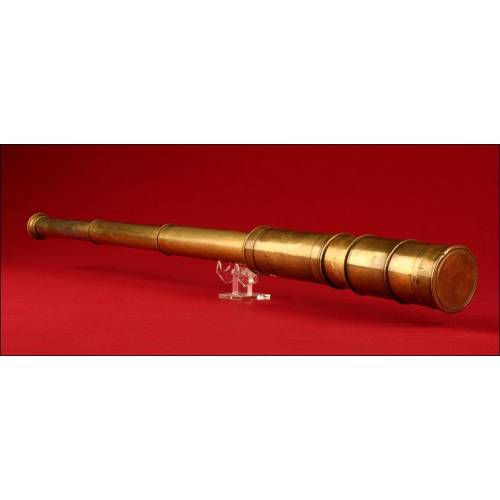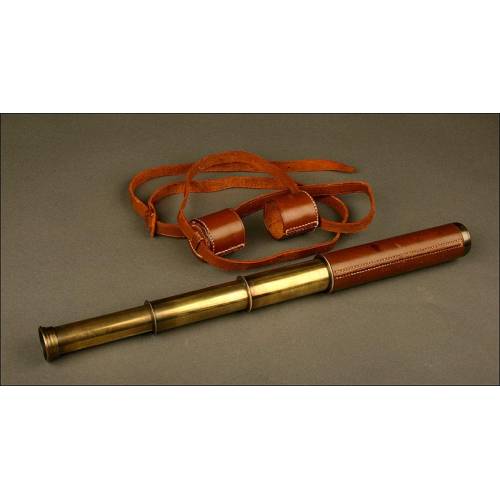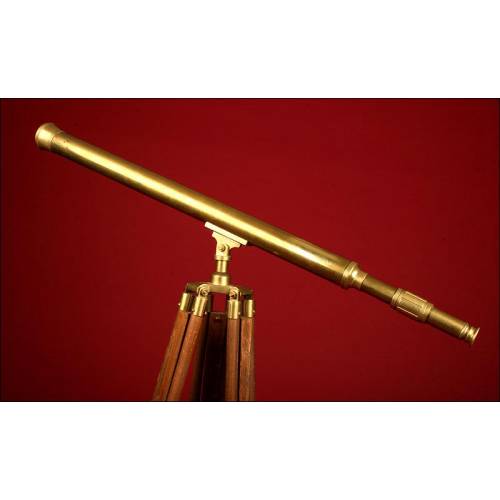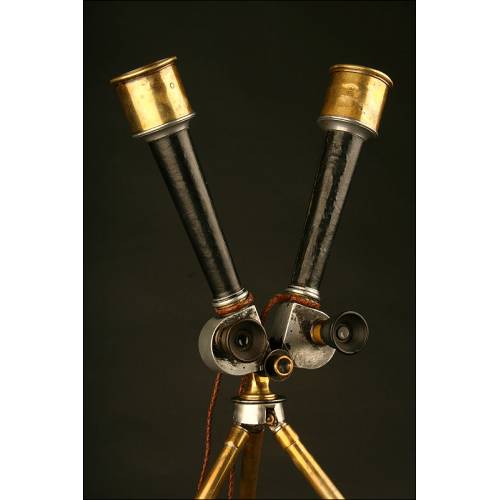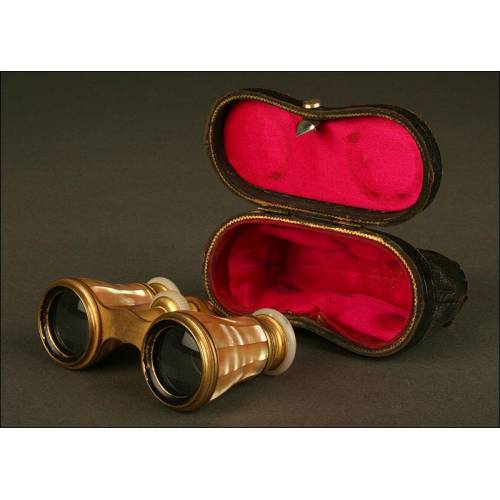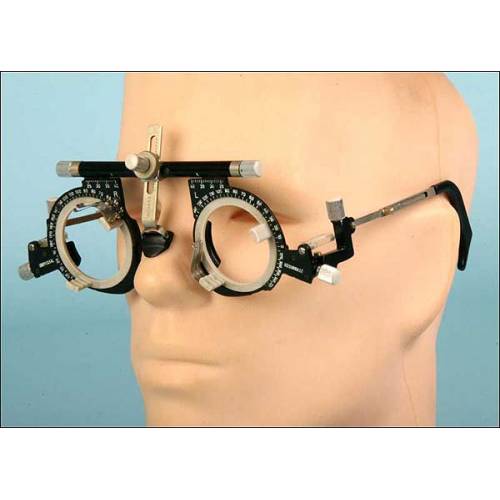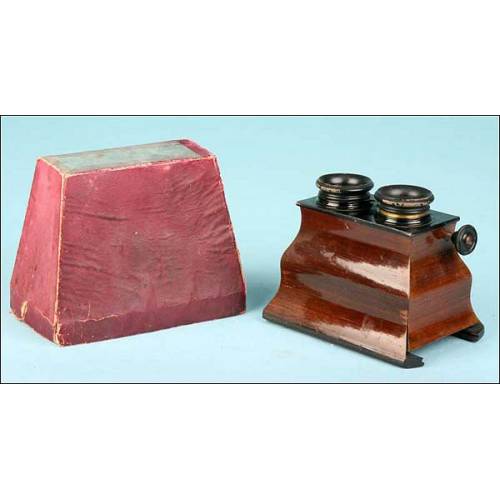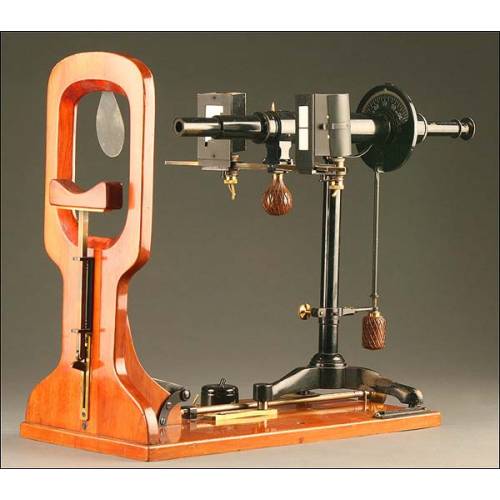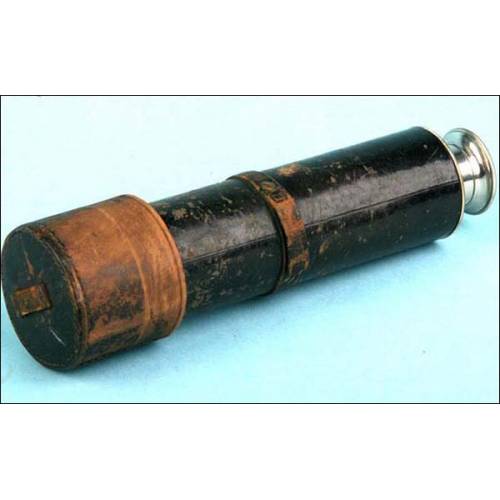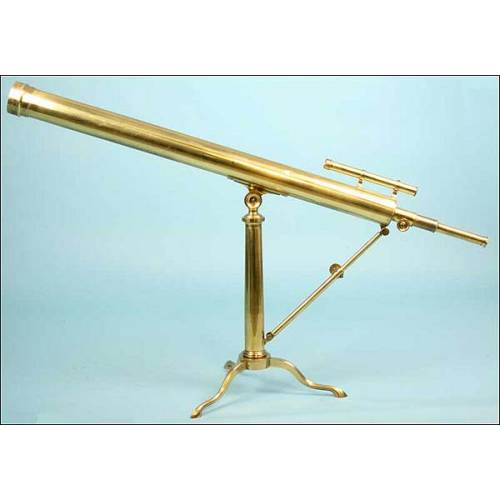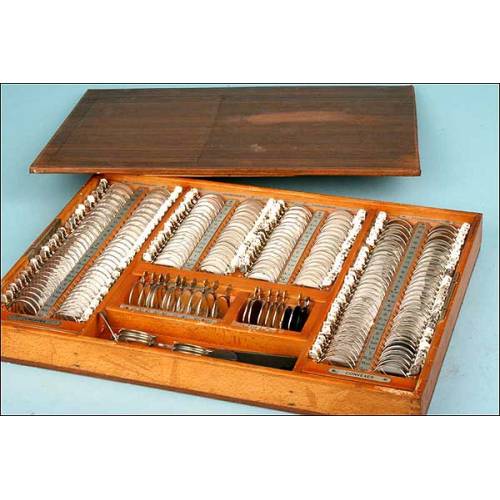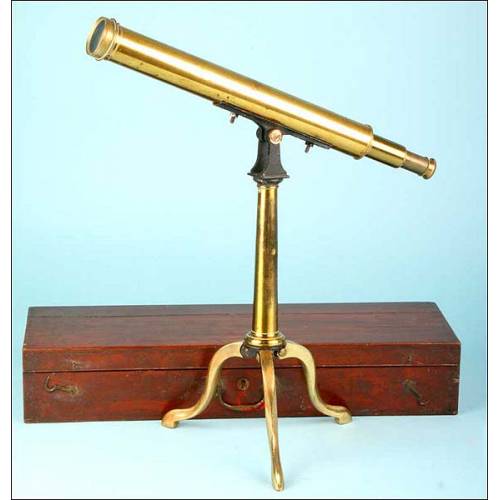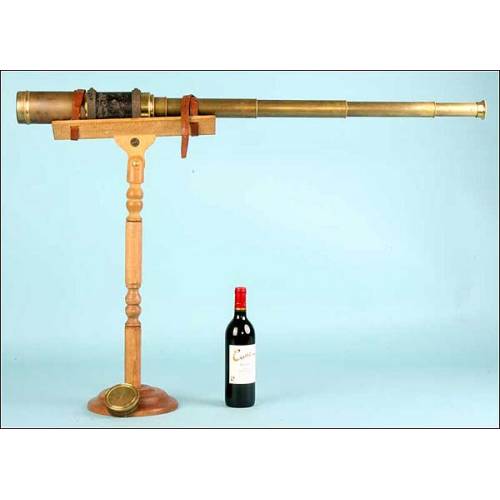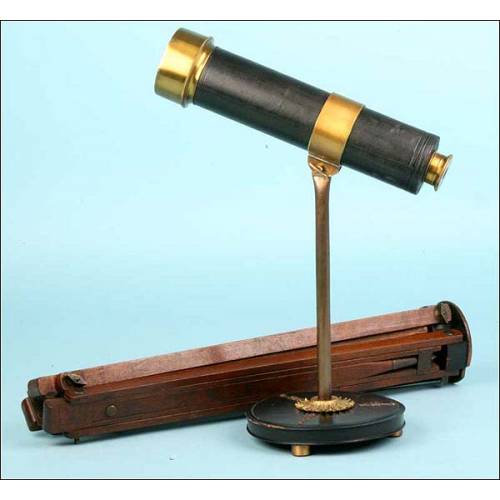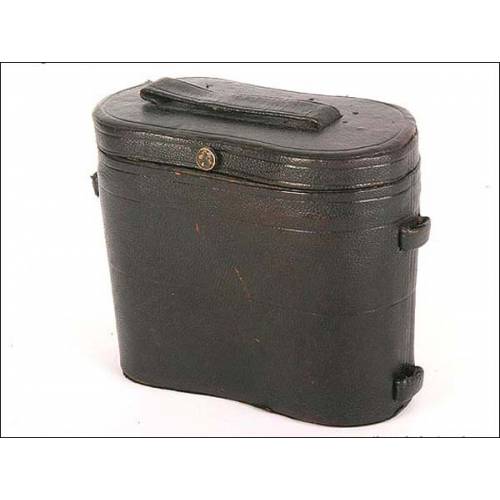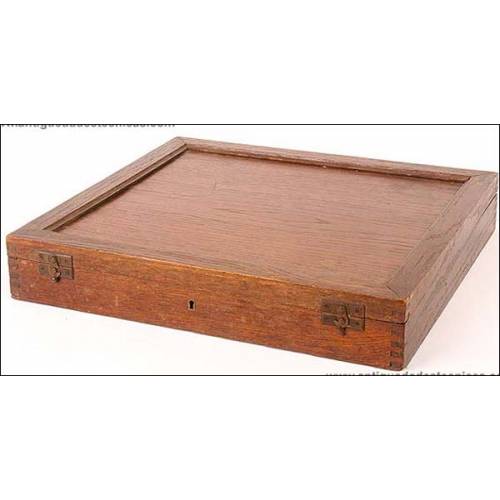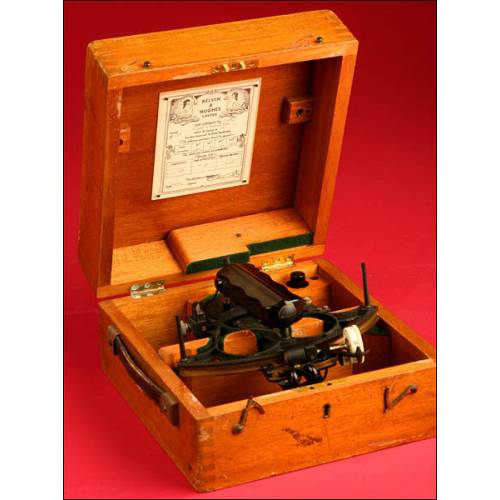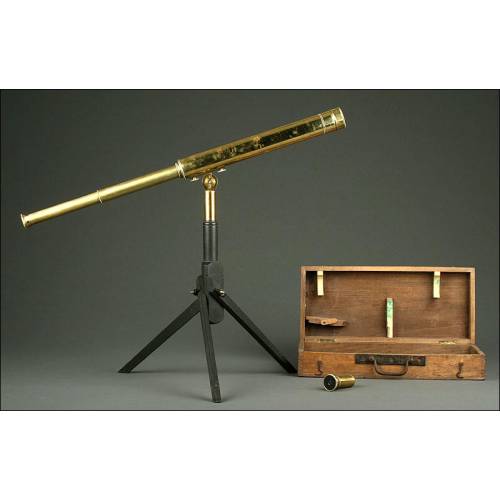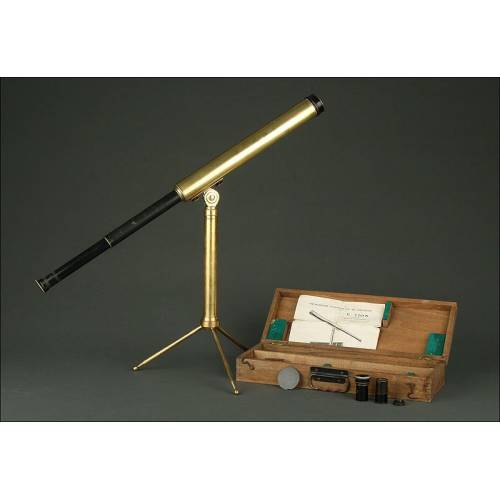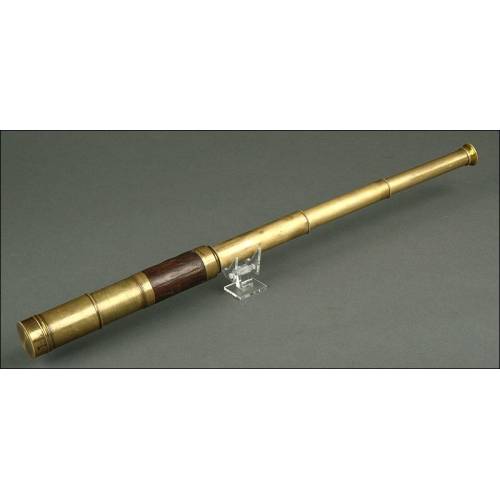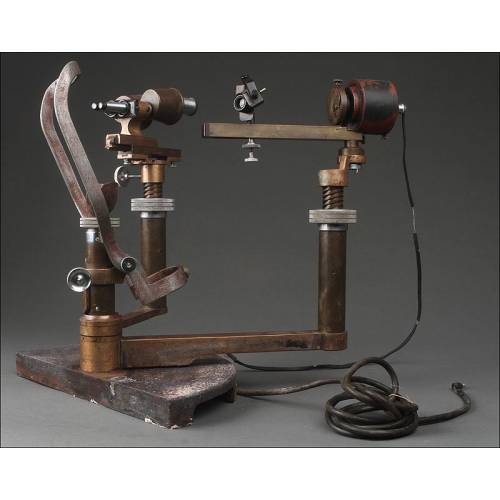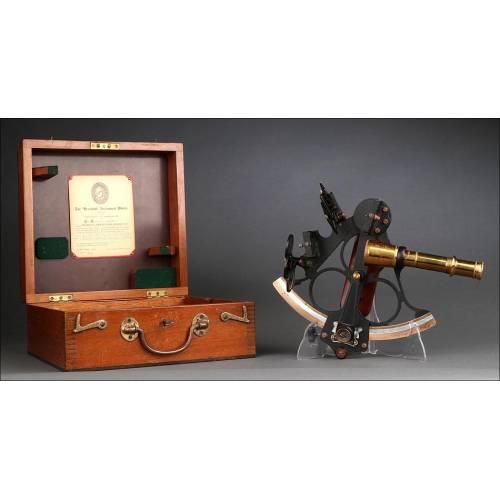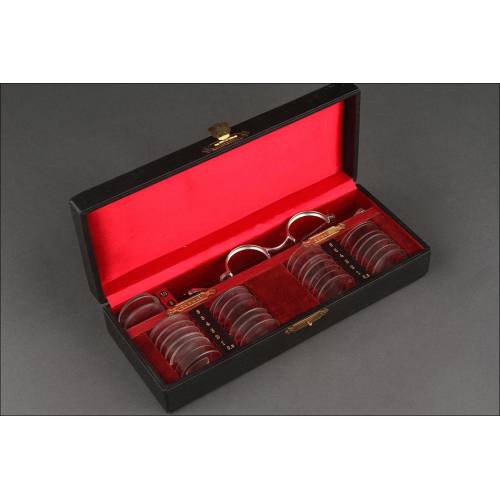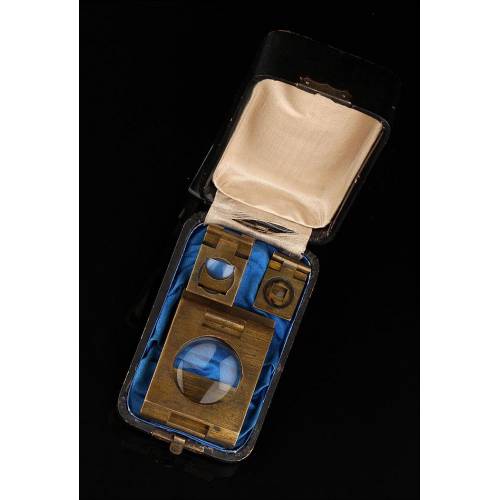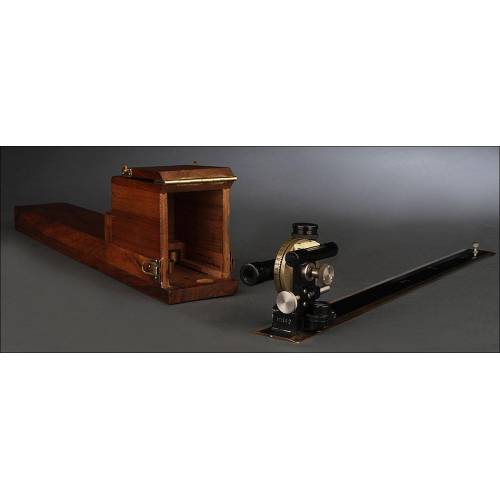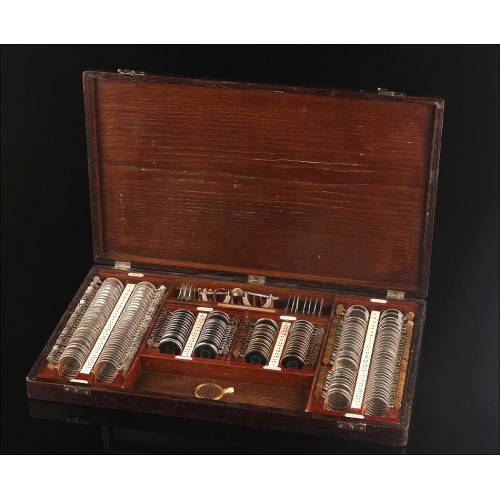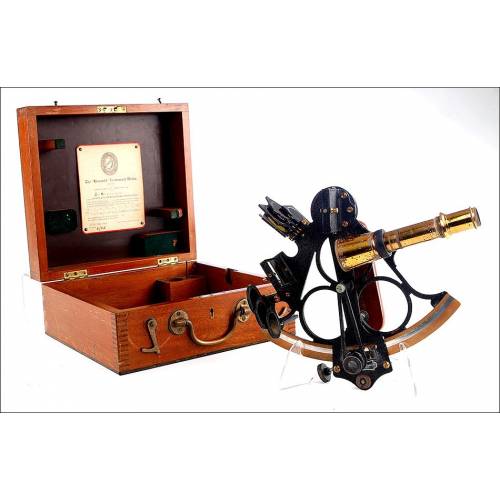A-892
W&S Jones Navigation Octant in Museum Condition. England, ca. 1800
Exceptional antique octant in original case and perfect working order. Manufactured circa 1800
Sold!
This impressive maritime octant was made in London in the lato 18th Centuru to the early 19th century. This measuring device for maritime use comes in its original mahogany wooden box and is in excellent condition. It preserves all its original pieces and they can all be easily manipulated, so the octant can still be used to determine the position by calculating the height of the stars over the sea. The instrument is made of brass and has a black wood stand, and is signed by the manufacturer. The octant was the instrument that preceded the sextant, a measuring device that was used in shipping. It is also known as reflecting quadrant and it works by measuring 90 degrees angles. The instrument ows its name, octant, to the size of the arch: it measures 45 degrees, an angle equivalent to 1/8 of a circle. This device was invented by John Hadley, an English mathematician, who developed it on the basis of the procedure suggested by Robert Hooke in 1648 and later modified by Isaac Newton; this procedure applies the reflection principle to angle measurement. The stunning item that we can see in these images is quite remarkable because of its beauty and good condition. It is a model that can be stored in its wooden case. All the filters, mirrors and mobile parts it mounts are original and work fine. The alidade (the brass piece with a window that marks the degrees on the scaled arch) bears the manufacturers name and location engraved in the metal with a nice lettering: W&S Jones 30 Holborn London. William Jones (17631831) was an English maker of optical and other scientific instruments who later formed a partnership with his younger brother Samuel Jones. W. & S. Jones were among the most successful scientific instrument makers in London during the late 18th and early 19th centuries. In 1797, Jones introduced the box sextant or 'pocket sextant' for nautical navigation, an early marvel of mechanical miniaturisation. The solid mahogany wooden case is complete and preserves the original lock and key, in perfect working order. This singular octant, more than two hundred years old, is a pioneer device in the history of navigation and a really beautiful antique. Measurements: Width: 9 in/23 cm. Height: 10.6 in/27 cm.

